
The house as seen in 1760 from "Old and New London," 1880s.
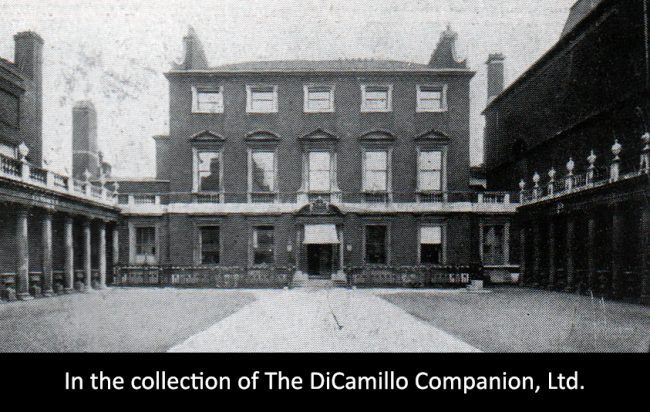
Photo of the entrance facade from the Dec 3, 1921 issue of "The Sphere."
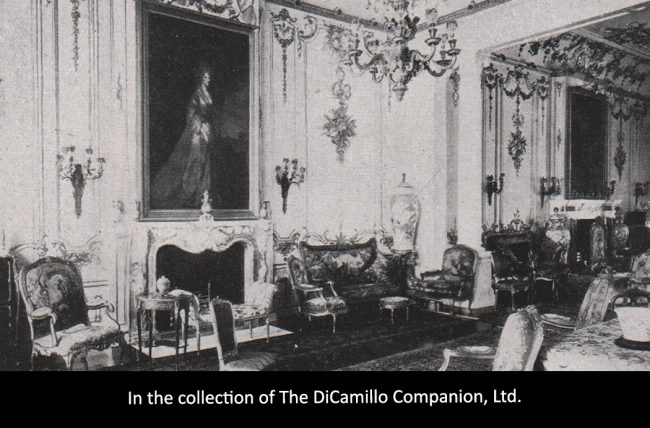
A photo of the ballroom from the Dec 3, 1921 issue of "The Sphere."

A photo of the grand staircase from the Dec 3, 1921 issue of "The Sphere."

This piece of the balustrade was probably on the first floor landing (see photos of the grand staircase)
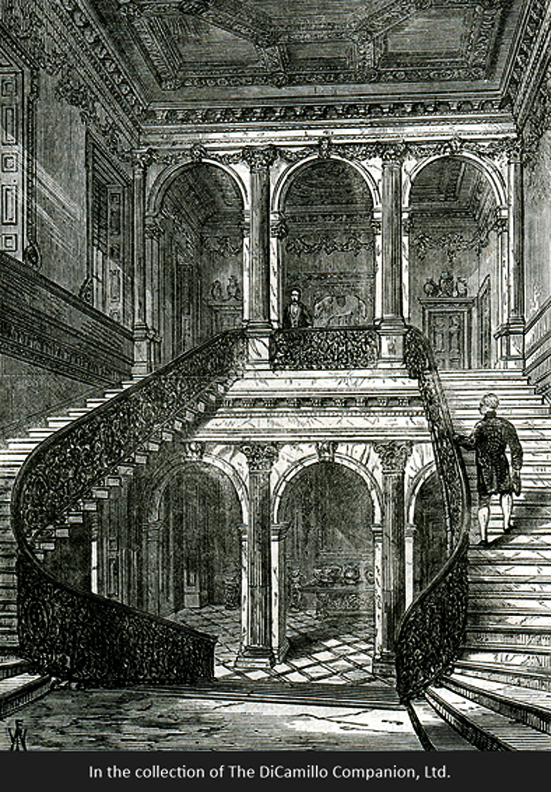
The grand staircase from "Old and New London," 1880s.

A photo of the large dining room from the Dec 3, 1921 issue of "The Sphere."
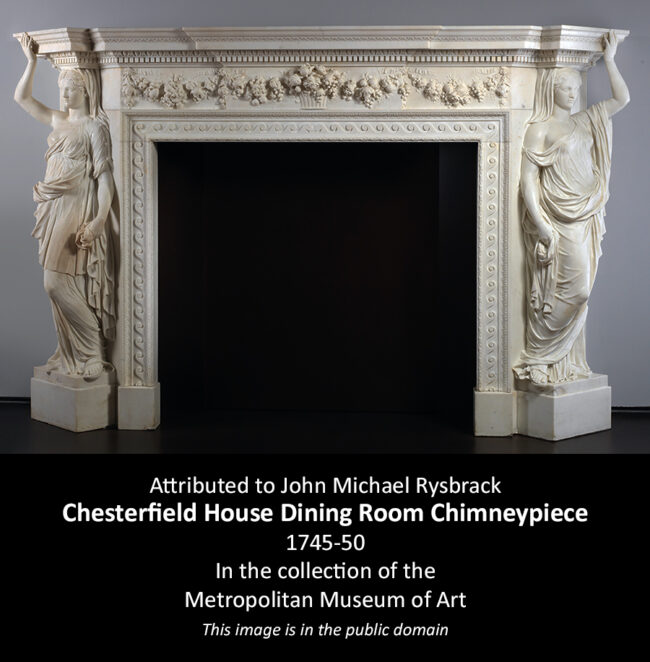
This chimneypiece, originally made for the dining room at Chesterfield House, was later installed at Bretby Park, Derbyshire, from whence it was sold to the Hearst Foundation, who donated it to the Met in 1956.

A photo of the library from the Dec 3, 1921 issue of "The Sphere."

Photo of the music room from the Dec 3, 1921 issue of "The Sphere."

Vermeil casters from the 4th Earl of Chesterfield's ambassadorial service, today in the collection of the Museum of Fine Arts, Boston.
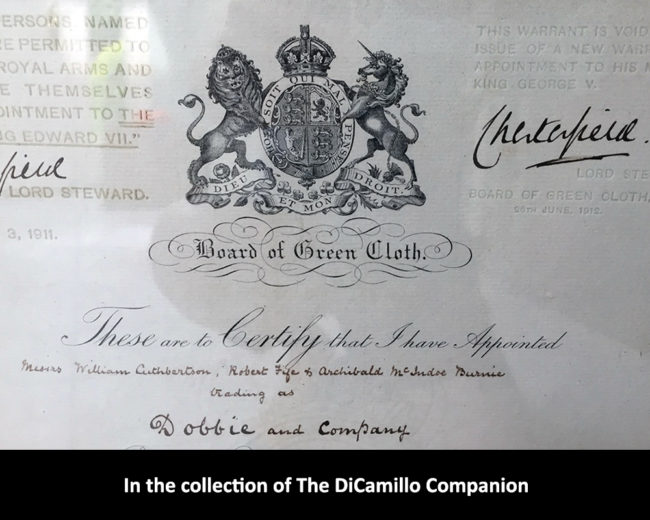
The 1911 royal warrant issued to Dobbie and Company by the Board of Green Cloth, signed the 10th Earl of Chesterfield.
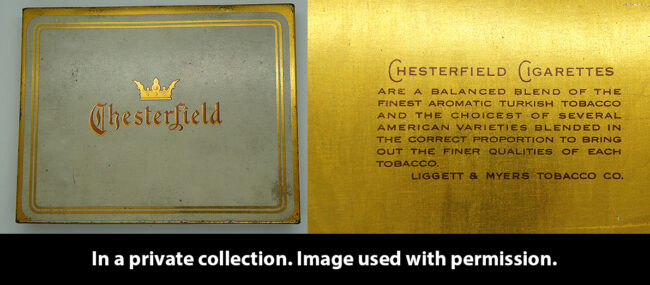
A 1940s American Chesterfield tin cigarette case. The Chesterfield name was used on more branded products in America than any other British aristocratic title.
Built / Designed For: Philip Stanhope, 4th Earl of Chesterfield
House & Family History: Chesterfield House's portico, the exterior French ironwork railings, the columns of the screen facing the courtyard, and the great marble staircase all came from Canons, the great Middlesex palace of the 1st Duke of Chandos. All of these were purchased for Chesterfield House by the 4th Earl of Chesterfield at the 1747 auction of the contents and fittings of Canons. After the demolition of Chesterfield House columns from the portico were reassembled in the Temple Lawn at Anglesey Abbey, urns and balustrades went to Buxted Park, a 1745-50 white marble chimneypiece (attributed to John Michael Rysbrack) and elements of the parcel-gilt bronze staircase balustrade went to the Metropolitan Museum of Art (this balustrade, complete with interlaced "Cs" under an earl's coronet and surrounded by the arms of the Order of the Garter, was very likely made for Chesterfield House and not removed from Canons, as had been thought for many years). The chimneypiece was donated to the Met in 1956 by the Hearst Foundation; the museum purchased the balustrade (housed at Harewood House, Yorkshire, since the demise of Chesterfield House) at a Christie's auction held on July 1, 1965 in London (see "Images" section for photos of the chimneypiece and a section of the balustrade). The great marble staircase itself found its way to the Odeon Cinema at Broadstairs, London (it was destroyed by bombing during World War II). At the end of 2020 the London firm of Ryan & Smith had for sale a monumental white marble and verde antico fireplace that came from the Drawing Room of Chesterfield House (Ryan & Smith purchased the fireplace from the Chrysler Museum of Art, Norfolk, Virginia). The Chesterfield House exterior ironwork railings (cast and wrought iron with gilt iron and gilt bronze embellishments), probably made by the French ironmonger Jean Montigny in the 1720s for Canons, were listed for auction by Sotheby's in 2017 with an estimate of £150,000-250,000 (they had been sold from Harewood House in 1988); the UK government put a temporary export ban on the railings until October 2017 to enable a UK-based organization to raise the money to keep them in the country, but sufficient funds were not raised and the railings were sold to an overseas buyer. The demolition of Chesterfield House in 1937 was the catalyst for the founding of The Georgian Group. It was in the Library (see photo in "Images" section) that the 4th Earl of Chesterfield wrote his famous letters to his son.
Collections: The 4th Earl of Chesterfield furnished his new London house with artifacts from Houghton Hall, Norfolk, including an 18-candle copper gilt lantern. A pair of vermeil casters with the arms of King George II, made 1727-28 in London by Paul Crespin and Abraham Buteaux as part of the 4th Earl of Chesterfield's ambassadorial plate service, is today in the collection of the Museum of Fine Arts, Boston (see photo in "Images" section). Much of the contents were auctioned onsite by Sotheby's on April 7, 1932.
Comments: The French travel writer Pierre-Jean Grosley wrote in his 1770 book "Londres" that he considered Chesterfield House to be the equal of the great houses of the nobility in Paris. Of all the great London houses destroyed in the 20th century, architectural historians generally consider Chesterfield House to be one of the most important losses.
Architect: Jeffry Wyatville (Wyattville) (Wyatt)
Date: 1811-13Architect: Isaac Ware
Date: 1747-49
Title: Biographical Dictionary of British Architects, 1600-1840, A - SOFTBACK
Author: Colvin, Howard
Year Published: 1995
Reference: pg. 1022, 1131
Publisher: New Haven: Yale University Press
ISBN: 0300072074
Book Type: Softback
Title: Buildings of England: Sussex, The
Author: Pevsner, Nikolaus; Nairn, Ian
Year Published: 1973
Reference: pg. 466
Publisher: London: Penguin Books
ISBN: 0140710280
Book Type: Hardback
Title: No Voice From the Hall: Early Memories of a Country House Snooper
Author: Harris, John
Year Published: 1998
Publisher: London: John Murray
ISBN: 0719555671
Book Type: Hardback
House Listed: Demolished
Park Listed: No Park
Past Seat / Home of: Philip Stanhope, 4th Earl of Chesterfield, 1750-73; Philip Stanhope, 5th Earl of Chesterfield, 1773-1815; George Stanhope, 6th Earl of Chesterfield, 1815-66; George Philip Cecil Arthur Stanhope, 7th Earl of Chesterfield, 1866-69. Charles Magniac, 1869-91. Henry Lascelles, 6th Earl of Harewood, 1922-37.
Current Ownership Type: Demolished
Primary Current Ownership Use: Demolished
House Open to Public: No
Historic Houses Member: No